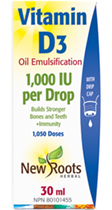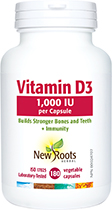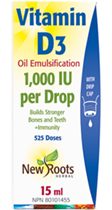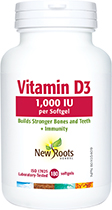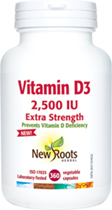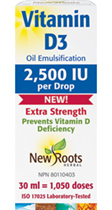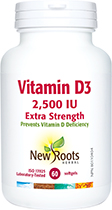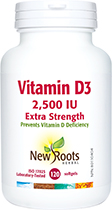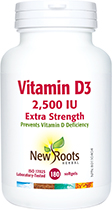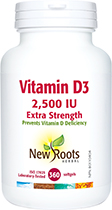Vitamin D: More Than Just Some Sun!
The beautiful days have arrived, the winter blues are gone, and the temptation can be great to abandon our bottle of vitamin D at the back of the kitchen cupboard. Although summer exposure to the sun’s rays does indeed contribute to greater production of vitamin D by the body, it may be a good idea to always keep this precious bottle on the kitchen counter. Let’s see why.
A multitude of health problems are associated with vitamin D deficiency, such as osteoporosis, heart disease, depression, cancer, and multiple sclerosis, not to mention the increased risks of severe symptoms of viral infections… Remember that vitamin D is a great ally in supporting immune function as well as helping the development and maintenance of bones and teeth through increased absorption and use of calcium and phosphorus.
In general, food alone (especially with fatty fish, eggs, fortified dairy products, and organ meats) is not sufficient to cover our vitamin D needs, the “inadequacy” threshold of which is 30 nmol/l of the blood marker 25(OH)D3. Deficiency, for its part, is anything below 50 nmol/l, and while medical doctors follow a so-called “healthy” value of 60 nmol/l, naturopathic practitioners rather seek an optimal value approaching 110 nmol/l.
As science has evolved significantly, Health Canada recently reassessed the maximum safe dose of nonprescription vitamin D supplements for children 9 years of age and older, adolescents, and adults to 62.5 µg, or 2,500 international units (IU) of vitamin D per day.
The other important source of vitamin D is none other than our sun. When they penetrate exposed skin, the sun’s type B ultraviolet rays (UVB) stimulate the conversion of 7-dehydrocholesterol (provitamin D3) into vitamin D3 (cholecalciferol), which is then metabolized to its hormonally active form, calcitriol.
However, the amount of sunshine in Canada is more limited than in the tropics… Elementary, my dear Watson! In a survey referenced by Statistics Canada, in the winter, about 40% of Canadians had a blood vitamin D concentration below 50 nmol/l, compared to 25% in the summer.
Many other factors also limit our exposure, such as cloudy or smoggy days, long hours spent indoors, or clothing, which covers a smaller or greater area of the body. Intensive use of sun protection, age (elderly people produce less vitamin D), as well as skin colour—darker skin limits the absorption of UV rays—are also limiting elements to be considered. In short, it is difficult to predict if one’s summer exposure to the sun allows their body to produce enough vitamin D. That being said, spending about 30 minutes in the sun in shorts and T-shirt, without sunscreen, between 10 a.m. and 4 p.m. and at least twice a week would be enough to “recharge the batteries.” However, too much exposure to the sun without protection can increase your risk of skin cancer…
In any case, an adequate intake of vitamin D can be obtained by combining food intake, sun exposure, and adequate supplementation.

 Stores
Stores
